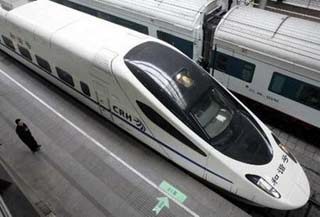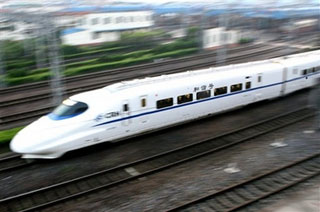
High-speed train in Beijing.(Photo: Reuters)
Yesterday morning, China's first high-speed train with a top speed of 250 km / h rolled on the track from Shanghai to Suzhou, officially named it on the list of countries with express trains. great.
The train that runs the Shanghai-Suzhou route is 112 km long and 39 minutes long, half of the train running time is shorter than before. The carriages are bright with rows of comfortable seats, designed like those on the cabin. There are WiFi services available on the passengers' laptops and other mobile devices.
China Ministry of Railways said that yesterday, 140 pairs of express trains were deployed simultaneously on short routes such as Shanghai-Hangzhou, Beijing-Tianjin . to reduce overload. It is planned that by the end of 2007, a total of 257 pairs of similar vessels will be put into operation.

High-speed train runs Shanghai - Suzhou route. (Photo: Xinhua)
The event has put China on par with developed countries in the railway industry such as Japan, the US, South Korea and most European Union countries. Currently the railway is still the most important means of transport of the most populous country in the world.
Through high-speed rail, China is trying to show that it can develop technology in key areas. However, these modern trains are still mainly based on technology transfer agreements of major firms such as Mitsubishi-Kawasaki Japan, Bombardier Canada, Siemens Germany and Alstom France.

High-speed train in Beijing.(Photo: Reuters)
According to calculations, high-speed trains will help China increase its passenger capacity by 18%, equivalent to 340,000 seats per day. This will help solve the problem of ticket scarcity, especially during holidays such as the Lunar New Year.
However, China currently has only 6,000 km of high-speed rails that qualify for trains running at full speed. In addition, there are 36,000 km of tracks that can run fast but must limit speeds from 120 km to 160 km / h. The country hopes to have 13,000 km of standard high-speed rail by 2020, accounting for one-fifth of the total length of existing railways.
Government